The way we stream and consume content on our smartphones has completely changed now. Just 10 years ago, no one was interested in watching movies on their smartphones, and there were no OTT applications too. As soon as the pandemic hit, the scenario completely flipped as a lot of people resorted to watching their favorite shows and movies on Netflix, Amazon Prime Video, and other such platforms. These platforms cater to their booming audience with an exclusive quality content catalog.
However, the quality of the content is also a great deal these days. Most of the high-quality content is based on HDR or High Dynamic Range, which is nothing but a display standard. A major example of the same you would have seen at multiple places where smartphone-producing companies boast that their smartphone comes with HDR10 or HDR10+ content support. In this article, we will get to know more about both types of display standards, along with a list of phones that support HDR/HDR10+ content.
HDR10: What does it mean?
It all started with HDR and now we have various terminologies like HDR10, HDR10+ (introduced by Samsung), DOLBY Vision, and HLG (Hybrid Log-Gamma). HDR is the display’s ability to project bright highlights and dark shadows accurately. This, in turn, helps you to immerse yourself into a wide gamut of colors on your smartphone display.
HDR10 is an open-source format, developed by the UHD alliance, that is currently more widespread. If your phone supports HDR content, then it can play HDR10. Technically speaking, HDR10 currently supports up to 4,000 nits peak brightness, with 10-bit color depth.
HDR10+
HDR10+ works differently than HDR10. It is the most advanced version of HDR10, a technology that enhances the colors and contrast of the media you view. It makes use of cameras allowing you to play back your videos and photos with true-to-life colors and incredible detail.
Nowadays, most of the smartphones come with HDR10+ technology.
ALSO READ: How to set up Netflix Party and watch Netflix with friends
How to Stream HDR10/HDR10+ Content on Netflix on Phone?
Streaming Netflix in HDR requires Netflix app version 5.0 or above for Android smartphones.
To stream in HDR, you will need:
- A phone that has a Dolby Vision or HDR10 compatible display and chipset.
- A 4-screen Netflix plan. You can check which plan you’re currently on at Netflix.com/ChangePlan.
- A steady internet connection speed of 25 megabits per second or higher.
- The streaming quality is set to High.
ALSO READ: List Of Phones That Support HD Streaming On Netflix, Amazon Prime
HDR10 vs. HDR10+ vs. Dolby Vision: Comparison of different display formats
| Formats | HDR10 | Dolby Vision | HDR10+ |
| Peak Brightness | 4,000 nits | 10,000 nits | 4,000 nits |
| Color Depth | 10-bit | 12-bit | 10-bit |
| Meta-data | Static | Dynamic/Frame-by-Frame | Dynamic/Frame-by-Frame |
| License | Open-source | Proprietorial | Open-source |
Dolby Vision outruns the other two as it’s more future-proof with more peak brightness levels and color depth. Moreover, its dynamic meta-data is created by hand by colorists and editors at the movie studio, while for HDR 10+, its metadata is created by an upscaling algorithm. In the future, Dolby Vision would be ready to match the standards, while the other two would fail then.
Phones complaint with Dolby Vision include the iPhone 11 series, Samsung Galaxy S20 series, Galaxy foldable phones, LG G6, OnePlus 8 Pro, and Google Pixel 4 phones. However, some of these HDR mobile devices are also certified for Dolby Vision. With a software patch from Dolby, most of these HDR 10 devices can become Dolby Vision-ready.
Unlike Netflix, Amazon doesn’t share a list of supported devices. We would test and update the following list for more new devices. You could also share any device that has missed the list. The comments section welcomes your valuable contribution.
HDR10/HDR10+ Compatible Devices
| Device Name | Size of Display | Type of Display | HDR10 or HDR 10+ | Resolution |
| Google Pixel 8 Pro | 6.7-inch | LTPO OLED | HDR 10+ | 1344X2992 |
| Samsung Galaxy S23 FE | 6.4-inch | Dynamic AMOLED 2X | HDR10+ | 1080X2340 |
| Google Pixel 8 | 6.2-inch | Actua OLED | HDR10+ | 1080X2400 |
| Vivo T2 Pro | 6.78-inch | AMOLED | HDR10+ | 1080X2400 |
| Xiaomi 13T | 6.67-inch | AMOLED | HDR10+ | 1220×2712 |
| Xiaomi 13T Pro | 6.67-inch | OLED | HDR10+ | 1220X2712 |
| Sony Xperia 5V | 6.1-inch | OLED | HDR10 | 1080X2520 |
| Apple iPhone 15 Plus | 6.7-inch | Super Retina XDR | HDR10 | 1290X2796 |
| Apple iPhone 15 Pro | 6.1-inch | Super Retina XDR | HDR10 | 1179X2556 |
| Apple iPhone 15 | 6.1-inch | Super Retina XDR | HDR10 | 1179X2556 |
| Apple iPhone 15 Pro Max | 6.7-inch | Super Retina XDR | HDR10 | 1290X2796 |
| Xiaomi Redmi Note 13 Pro+ | 6.67-inch | OLED | HDR10+ | 1220x 2712 |
| Moto Edge 40 Neo | 6.55-inch | P-OLED | HDR10+ | 1080x 2400 |
| Oppo Find N3 Flip | 6.8-inch | OLED | HDR10+ | 1080×2520 |
| Vivo V29e | 6.78-inch | AMOLED | HDR10+ | 1080X2400 |
| Vivo iqoo Z7 Pro | 6.78-inch | AMOLED | HDR10+ | 1080×2400 |
| Realme GT5 | 6.74-inch | OLED | HDR10+ | 1240×2772 |
| Vivo V29 | 6.78-inch | AMOLED | HDR10+ | 1260×2800 |
| Samsung Galaxy Z Flip 5 | 6.7-inch | AMOLED 2X | HDR10+ | 1080X2640 |
| Samsung Galaxy Z Fold 5 | 7.6-inch | AMOLED 2X | HDR10+ | 1812X2176 |
| OnePlus Nord CE 3 | 6.7-inch | Fluid AMOLED | HDR10+ | 1080×2412 |
| Nothing Phone 2 | 6.7-inch | LTPO AMOLED | HDR10+ | 1080×2412 |
| Realme Narzo 60 Pro | 6.7-inch | AMOLED | HDR10+ | 1080x 2412 |
| Vivo iqoo Neo 7 Pro | 6.78-inch | AMOLED | HDR10+ | 1080×2400 |
| Oppo Reno 10 Pro | 6.7-inch | OLED | HDR10+ | 1080×2412 |
| OnePlus Nord 3 | 6.74-inch | Fluid AMOLED | HDR10+ | 1240×2772 |
| Vivo X90s | 6.78-inch | Curved AMOLED | HDR10+ | 1260X2800 |
| Google Pixel Fold | 7.6-inch | OLED | HDR10+ | 1840×2208 |
| Moto Razr 40 | 6.1-inch | AMOLED | HDR10+ | 1080×2640 |
| Honor 90 | 6.7-inch | AMOLED | HDR10+ | 1200×2664 |
| Moto Razr 40 Ultra | 6.9-inch | AMOLED | HDR10+ | 1080×2640 |
| Xiaomi Redmi Note 12T Pro | 6.6-inch | IPS LCD | HDR10 | 1080×2460 |
| Lava Agni 2 | 6.78-inch | Curved AMOLED | HDR10+ | 1080×2400 |
| Oppo Reno 10 Pro+ | 6.74-inch | AMOLED | HDR10+ | 1240×2772 |
| Realme 11 Pro+ | 6.7-inch | AMOLED | HDR10+ | 1080×2412 |
| Realme 11 Pro | 6.7-inch | AMOLED | HDR10+ | 1080×2412 |
| Google Pixel 7a | 6.1-inch | OLED | HDR | 1080×2400 |
| Moto Edge 40 | 6.55-inch | Curved P-OLED | HDR10+ | 1080×2400 |
| Vivo X Fold 2 | 8.03-inch | LTPO AMOLED | HDR10+ | 1916×2160 |
| Xiaomi 13 Ultra | 6.73-inch | AMOLED | HDR10+ | 1440×3200 |
| Moto Edge 40 Pro | 6.67-inch | P-OLED | HDR10+ | 1080×2400 |
| Oppo Find X6 Pro | 6.82-inch | OLED | HDR10+ | 1440×3168 |
| Xiaomi Redmi Note 12 Turbo | 6.67-inch | OLED | HDR10+ | 1080×2400 |
| Vivo iqoo Z7 | 6.38-inch | LCD | HDR10+ | 1080×2400 |
| Xiaomi 13 Lite | 6.55-inch | AMOLED | HDR10+ | 1080×2400 |
| Vivo V27 | 6.78-inch | AMOLED | HDR10+ | 1080×2400 |
| Vivo V27 Pro | 6.78-inch | AMOLED | HDR10+ | 1080×2400 |
| OnePlus 11R | 6.74-inch | Fluid AMOLED | HDR10+ | 1240×2772 |
| Samsung Galaxy S23 Ultra | 6.8-inch | AMOLED | HDR10+ | 1440×3088 |
| Samsung Galaxy S23 | 6.1-inch | AMOLED | HDR10+ | 1080×2340 |
| Samsung Galaxy S23+ | 6.6-inch | AMOLED | HDR10+ | 1080X2340 |
| Vivo Y100 | 6.38-inch | AMOLED | HDR10+ | 1080x 2400 |
| OnePlus 11 | 6.7-inch | AMOLED | HDR10+ | 1440×3216 |
| Oppo Find N2 | 7.1-inch | AMOLED | HDR10+ | 1792×1920 |
| Oppo Find N2 Flip | 6.8-inch | AMOLED | HDR10+ | 1080×2520 |
| Iqoo 11 Pro | 6.78-inch | LTPO AMOLED | HDR10+ | 1440×3200 |
| Xiaomi 13 Pro | 6.73-inch | AMOLED | HDR10+ | 1440×3200 |
| Vivo X90 Pro | 6.78-inch | AMOLED | HDR10+ | 1260×2800 |
| Vivo V90 Pro+ | 6.78-inch | AMOLED | HDR10+ | 1440×3200 |
| Vivo X90 | 6.78-inch | AMOLED | HDR10+ | 1260×2800 |
| Realme 10 Pro+ | 6.7-inch | Super AMOLED | HDR10+ | 1080×2412 |
| Xiaomi Redmi 12 | 6.67-inch | Super AMOLED | HDR10+ | 1080×2400 |
| Google Pixel 7 Pro | 6.7-inch | OLED | HDR10+ | 1440×3120 |
| Google Pixel 7 | 6.3-inch | OLED | HDR10+ | 1080×2400 |
| Apple iPhone 14 Plus | 6.7-inch | Super Retina XDR | HDR10 | 1284×2778 |
| Apple iPhone 14 Pro | 6.1-inch | Super Retina XDR | HDR10 | 1179×2556 |
| Apple iPhone 14 | 6.1-inch | Super Retina XDR | HDR10 | 1170×2532 |
| Apple iPhone 14 Pro Max | 6.7-inch | Super Retina XDR | HDR10 | 1290×2796 |
| Asus Zenfone 9 | 5.9-inch | Super AMOLED | HDR10+ | 1080×2400 |
| Samsung Galaxy Z Flip 4 | 6.7-inch | Dynamic AMOLED 2X | HDR10+ | 1080×2640 |
| Samsung Galaxy Z Fold 4 | 7.6-inch | Dynamic AMOLED 2X | HDR10+ | 1812×2176 |
| Vivo V25 Pro | 6.56-inch | AMOLED | HDR10+ | 1080×2376 |
| OnePlus 10T | 6.7-inch | Fluid AMOLED | HDR10+ | 1080×2412 |
You can follow Smartprix on Twitter, Facebook, Instagram, and Google News. Visit smartprix.com for the most recent news, reviews, and tech guides.















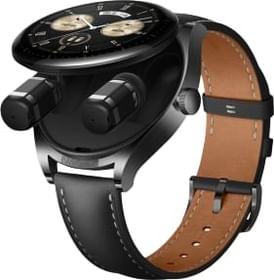

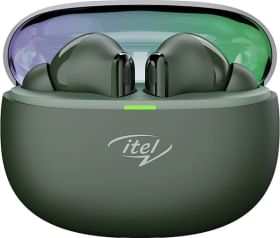
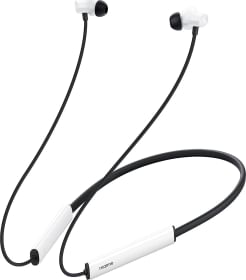
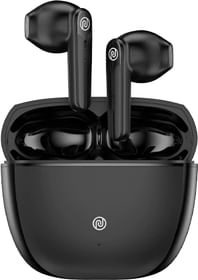
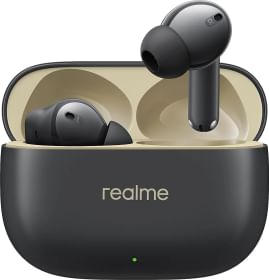
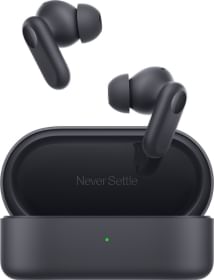
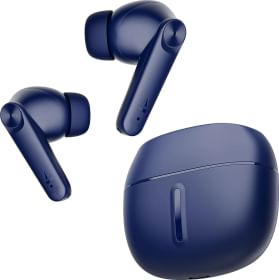









Samsung is not using dolby vision ,samsung hdr always passed dolby vision grade .